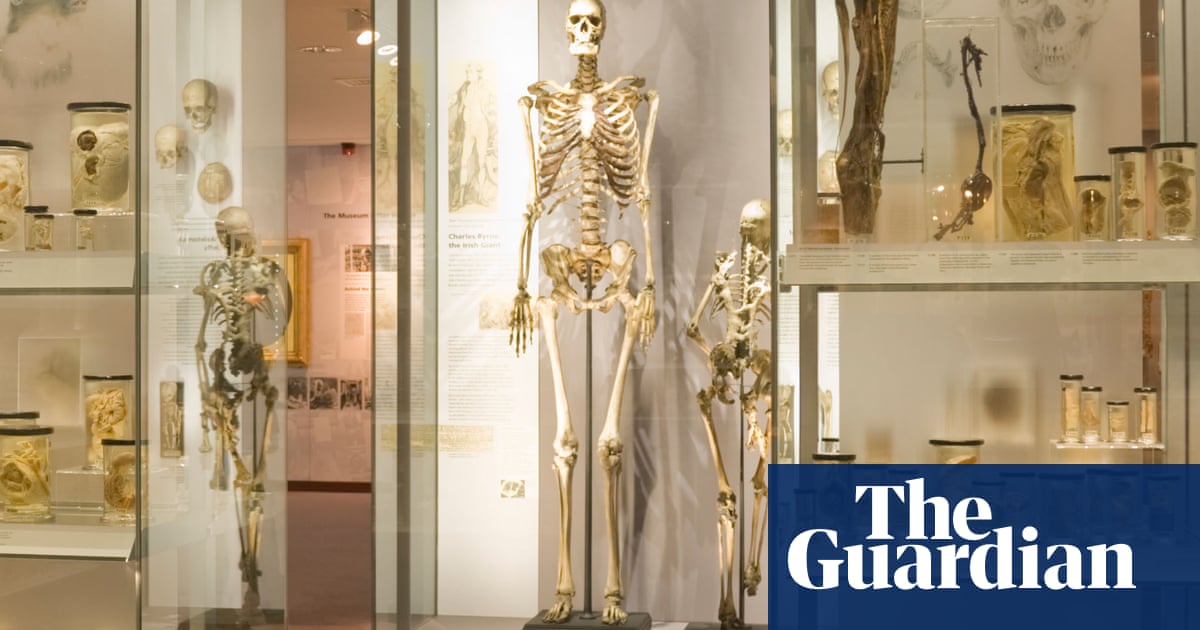
Thomas Muinzer recalls the day when, as a bored student in Belfast learning about property law, a few sentences about the 18th century “Irish Giant” Charles Byrne caught his eye.
“I saw a footnote about a celebrity Irish giant from Northern Ireland whose remains were stolen on the way to his funeral – querying whether or not that was the theft of property, because it was a dead body,” he says.
Muinzer learned that for more than 200 years Byrne’s skeleton – despite his fervent and explicit wishes – had been on display at the Hunterian Museum at Lincoln’s Inn Fields, central London, and became “convinced that something very unfortunate had been done to his remains and his posthumous memory”.
It was a the start of a two decades long obsession, as Muinzer, now co-Director of Aberdeen University’s Centre for Energy Law, teamed up with leading medical ethicist Prof Len Doyal, and other campaigners including the late Dame Hilary Mantel, to request Byrne’s remains to be removed from public display.
This week, they finally achieved that goal. The Royal College of Surgeons, which runs the museum, announced that when it reopens after a six-year revamp this spring, Byrne’s remains will no longer be displayed but will be kept in storage and be available for “bona fide medical research”.
At least 2.3 metres (7ft 7in) in stature, Byrne made a living exhibiting himself in the years before his death, aged 22. But historical records reveal he was horrified by the idea that after his death his body would be put on display, says Doyal, emeritus professor of medical ethics at Queen Mary University in London, who co-authored a paper about Byrne with Muinzer in 2011.
“Everything that has happened, to this point, went against Byrne’s explicit wishes,” he says. “There was no question that Byrne did not want this to happen. And it did.”
Born in County Derry in 1761, Byrne, who had acromegaly (overgrowth of the bones) and gigantism, set off for London in his late teens. “He was not just, as it were, a fairground celebrity,” says Doyal, who added that Byrne was seen as a gentleman giant. “He mixed with quite well known and wealthy people.”
When he died in 1783 a newspaper of the time noted that “a whole tribe of surgeons put in a claim for the poor departed Irishman surrounding his house just as harpooners would an enormous whale”. Before Byrne could be buried, Hunter reportedly bribed one of his friends to secretly swap the corpse for dead weight and bring the body to him. Four years later Hunter put Byrne’s skeleton on display.
The way Byrne’s remains were obtained was “absolutely wrong”, says Dawn Kemp, Director of Museums at the Royal College of Surgeons, but the argument about what should now happen was not black and white.
Kemp says the college’s decision to retain the skeleton should not be considered “definitive”, but says since 1799 its trustees had been legally bound to preserve the collection of John Hunter – the pioneering Scottish surgeon and anatomist who the museum is named after – in its entirety. She also argues that, in 2023, it cannot be predicted how the remains could be useful to medical research in the future.
Like the debate over the Parthenon marbles in the British Museum, the museum has reluctantly found itself at the frontline of a cultural battle which has little taste for measured debate. Kemp believes some people “think that we’re being curatorial cowards and that this is the dumbing down of museums”, while others had called the decision to retain Byrne’s remains and not carry out his last wishes of being buried at sea “evil”, she says.
“I don’t want to be part of this move on social media to polarise the debate, because I think it’s nuanced, [and] it’s really important,” she says. “The wrong has been done to Byrne in 1783, we’re not going to right it by making a quick decision now.”
Doyal and Muinzer argue that DNA from the skeleton has already been obtained, and they suspect the museum would allow medical students to see the skeleton in private. Kemp insists this is not the case and says a new programme of talks called Hunterian Provocations will explore issues around the display of human remains and the acquisition of specimens during British colonial expansion.
“There’s no need for the Hunterian to keep this body,” says Doyal. “Byrne’s original wish was to be buried at sea. That’s what he wanted, that’s what he should get.”
Muinzer recalls that when he first saw Byrne’s remains in 2011 it was alongside a quotation from the contemporary diarist Sylas Neville calling Byrne an ill-bred, disagreeable beast, while Hunter’s involvement had been “air-brushed” out of the story. Now, perhaps, there is a chance for the Irish Giant to be seen in a new light. “His is a remarkable story that captures the imagination,” Muinzer says. “And there may be more to come.”












